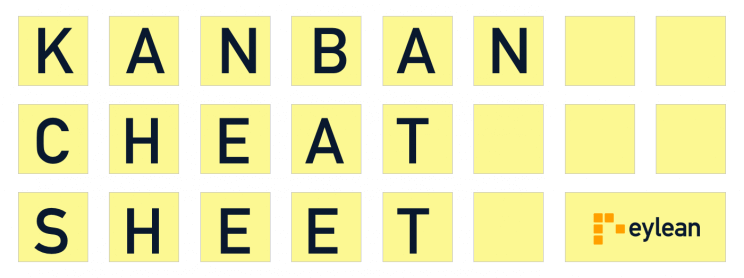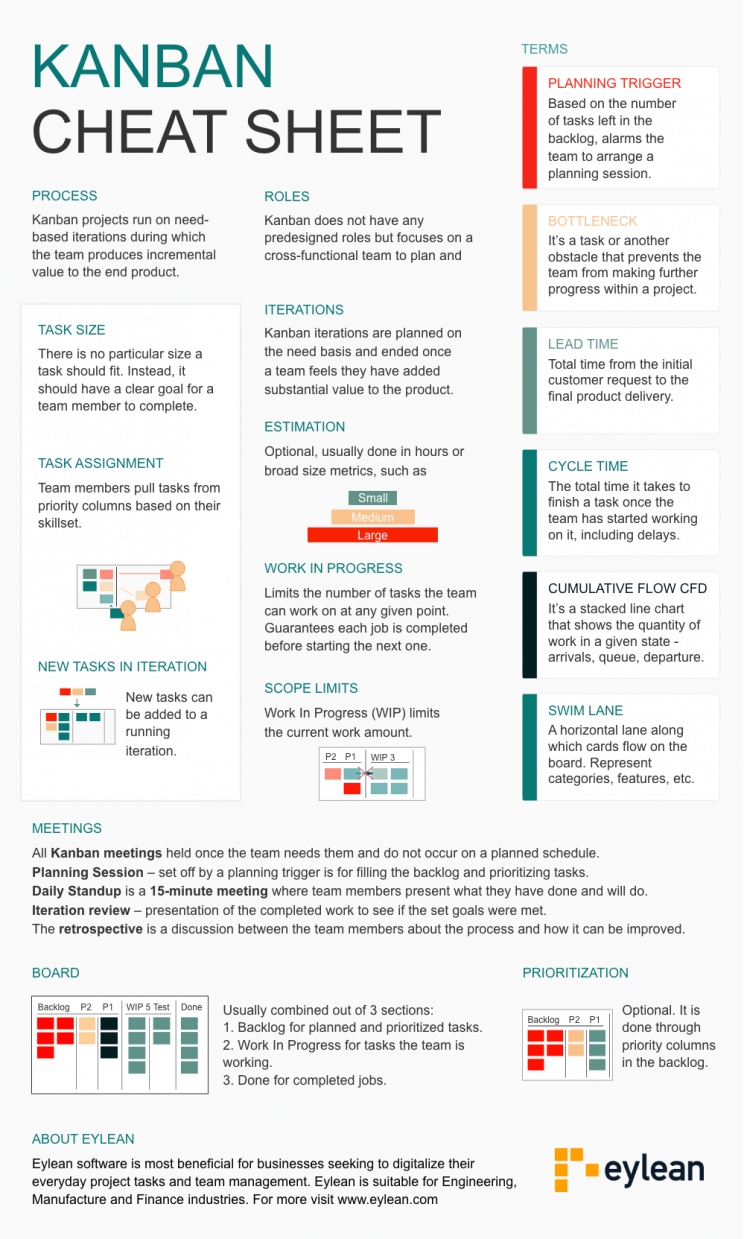
Ever felt lost about the Kanban terms or wanted to have a quick check whether you are doing it right?
Below is another handy Agile framework cheat sheet combined just for that! Check it for a quick reminder on how to move forward. WIP limits, planning triggers or just about anything else you might need.
Kanban Cheat Sheet

Download Free Kanban Cheat Sheet Here
PROCESS: Kanban projects run on need-based iterations during which the team produces incremental value to the end product.
TASK SIZE: There is no particular size a task should fit. Instead, it should have a clear goal for a team member to complete.
TASK ASSIGNMENT: Team members pull tasks from priority columns based on their skillset.
NEW TASKS IN ITERATION: New tasks can be added to a running iteration.
ROLES: Kanban does not have any predesigned roles but focuses on a cross-functional team to plan and complete the work.
ITERATIONS: Kanban iterations are planned on the need basis and ended once a team feels they have added substantial value to the product.
ESTIMATION: Optional, usually done in hours or broad size metrics, such as small, medium & large.
WORK IN PROGRESS: Limits the number of tasks the team can work on at any given point. Guarantees each job is completed before starting the next one.
SCOPE LIMITS: Work In Progress (WIP) limits the current work amount.
PLANNING TRIGGER: Based on the number of tasks left in the backlog, alarms the team to arrange a planning session.
BOTTLENECK: It’s a task or another obstacle that prevents the team from making further progress within a project.
LEAD TIME: Total time from the initial customer request to the final product delivery.
CYCLE TIME: The total time it takes to finish a task once the team has started working on it, including delays.
CUMULATIVE FLOW CFD: It’s a stacked line chart that shows the quantity of work in a given state – arrivals, queue, departure.
SWIM LANE: A horizontal lane along which cards flow on the board. Represent categories, features, etc.
MEETINGS
All Kanban meetings held once the team needs them and do not occur on a planned schedule.
Planning Session – set off by a planning trigger is for filling the backlog and prioritizing tasks.
Daily Standup is a 15-minute meeting where team members present what they have done and will do.
Iteration review – presentation of the completed work to see if the set goals were met.
The retrospective is a discussion between the team members about the process and how it can be improved.
PRIORITIZATION: Optional. It is done through priority columns in the backlog.
BOARD: Usually combined out of 3 sections:
- Backlog for planned and prioritized tasks.
- Work In Progress for tasks the team is working.
- Done for completed jobs.




